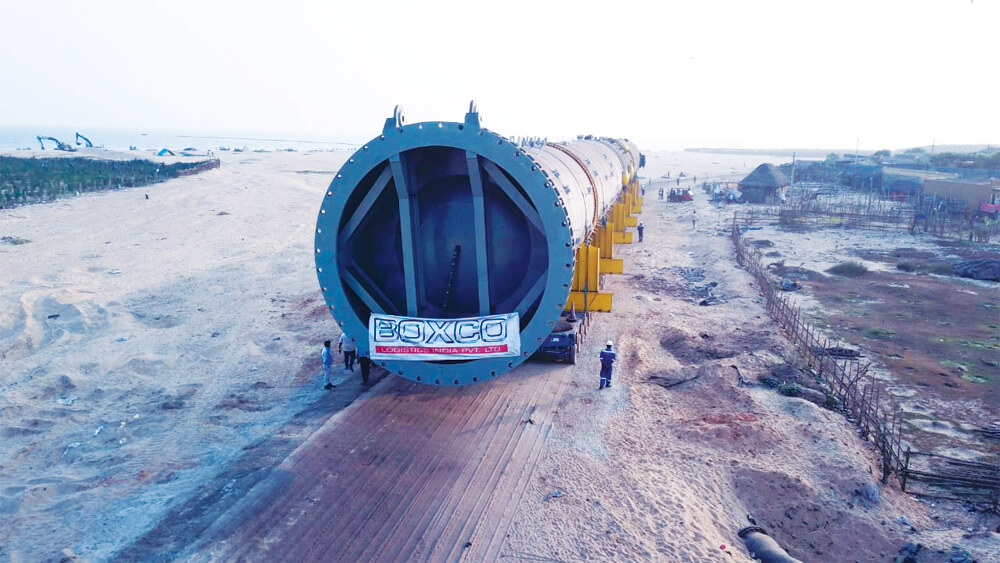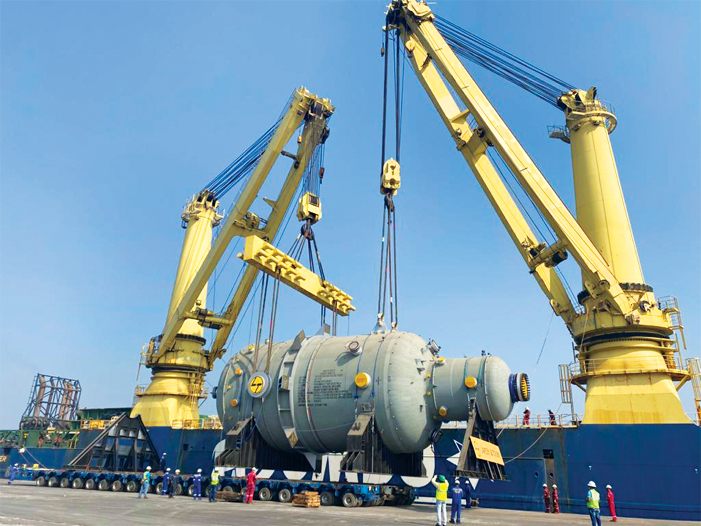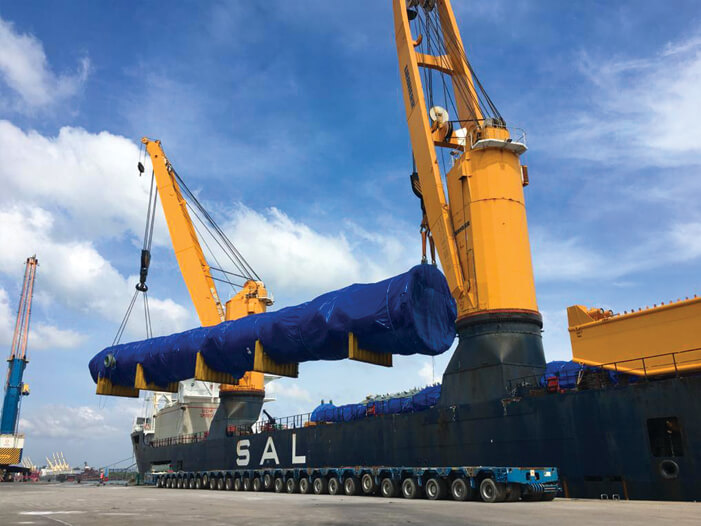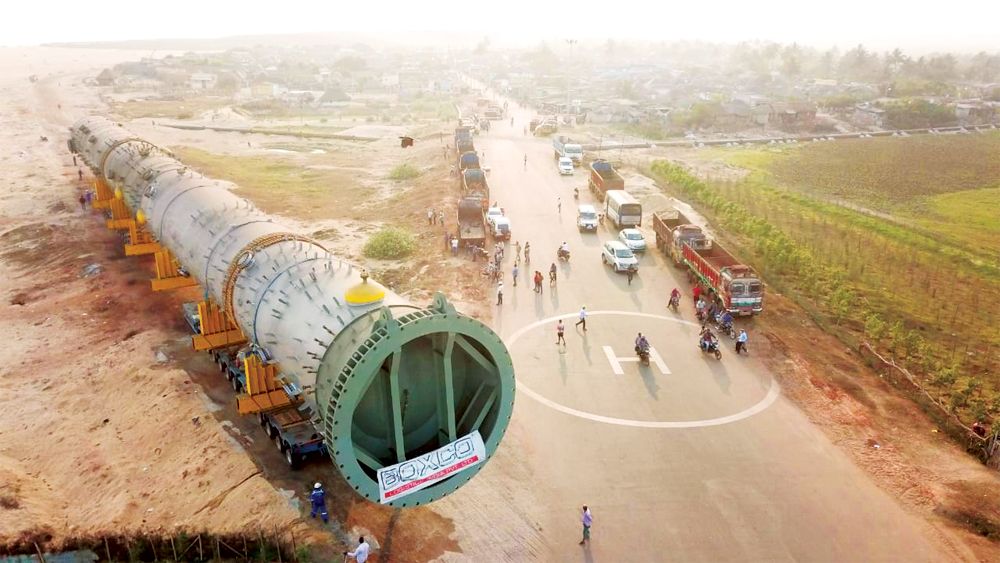It is well known that boosting coastal and inland waterway transportation can alleviate the pressure on roads and railways while reducing logistics costs, a boon for competitiveness and economic growth. Sea transport is also considerably more climate and environmentally friendly and safer than road transport.
India, however, despite its more than 7,500 km (4,660 miles) of coastline and 14,000 km of navigable inland waterways, transports only around 6% of its freight by sea routes.
The most efficient and safest way to move project cargo is by coastal routes and through inland waterways. Project cargo in India has seen a fair need for multimodal logistics involving ocean or river transportation. Moving the process equipment used in the oil and gas industry and the fertiliser industry and the equipment for powerplants has always required multimodal logistics, either because of the location or because of the size or weight of the packages to be moved.
The recent past has seen a marked increase in the size of weight of equipment being carried. We have seen a number of packages above 70 m in length, 10 m in width and height, and 1000 MT in weight, and the packages keep getting bigger. This is because manufacturing packages in state-of-the-art fabrication facilities is more cost effective and results in a higher quality than assembling them on site.
Most of the manufacturers of such pieces of equipment are based near the west coast of India whereas the projects are mainly on the east coast. There is, hence, a consistent need for a coastal service from the west coast to the east coast of India.
- Here are some rece nt examples of expansion projects involving coastal ocean freight
- IOCL Haldia
- GR Engineering, BPCL Kochi Project
- IOCL Haldia
- HPCL Vizag
- IOCL Sindri Barauni
- Toyo Engineering, HURL Gorakhpur
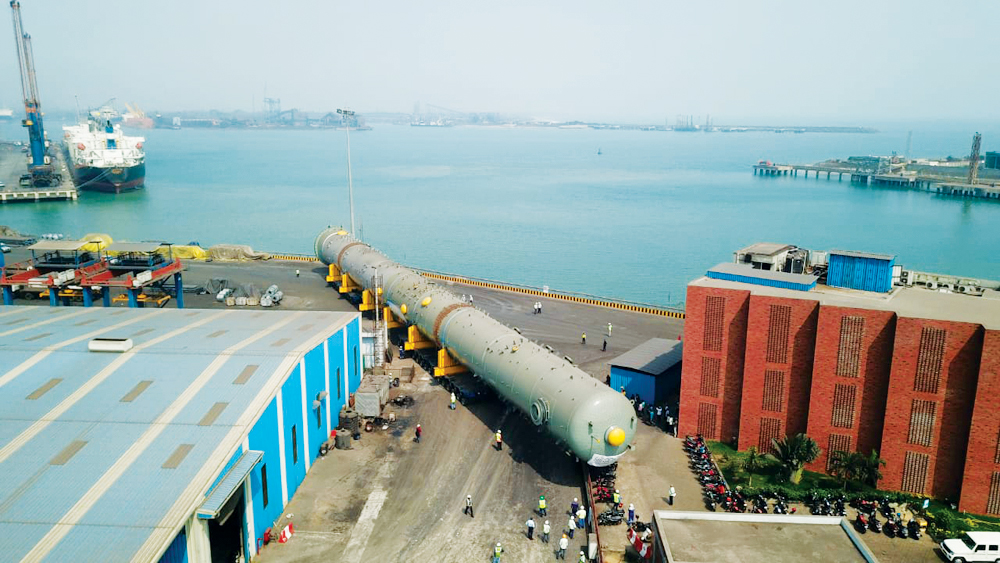
The increase in production capacity means that equipment keeps getting bigger, but assembling high-end complex units at temporary sites close to the final project site is not always an option. Even if it is, the manufacturers are often concerned about the quality of the final assembled product.
Over the next three years, we expect to see a spurt in the movement of super heavy-lift and super ODCs, which will require ocean transport, beginning with IOCL Paradip. The first shipment for this project was in August 2020.
This will be followed by two prestigious refinery projects. The first of these is HPCL Vizag RUF, which began in October 2020. Most of the supplies will come from Hazira but modules will also move from Kattupalli. Movements to Vizag RUF will last for about 24 months, so we expect two coastal shipments every month. At the same time, we expect to make at least two coastal voyages for HRRL Barmer from Dahej.
During 2020–22, we are also expecting that the container terminals in the country will enhance and modernise their RTG and RMQ cranes, as demand for container movement is increasing. Under the government of India’s Atmanirbhar scheme, multinationals like Kone Cranes are setting up manufacturing bases in India. Other companies are also expected to follow suit, which will result in massive coastal movement opportunities. We are seeing a lot of inquiries for movements from Hazira to Kandla, from Kattupalli to Vizag, and from Nhava Sheva to Goa.
The EPC contract for the FCI Talcher project has been awarded to Wuhuan Engineering in China, which will also involve the procurement of major components from Indian engineering companies. This project will see large packages landing from the west coast of India into Paradip.
Even though cargo flows appear to be unidirectional from the west coast to the east, a lot of windmill equipment is being supplied from the east coast to the west. Last year, Gamesa entered into a contract for a few voyages of windmill equipment from Tuticorin to Kandla, and we are sure more will follow. A regular return service running from the east to the west coast would encourage manufacturing units in the east coast to look at coastal shipping as a viable option, thus ensuring that we have enough return cargo for these voyages.
There is a latent need for a strong coastal service, given the restrictions in road transport for super heavy lifts and ODCs. With a decent service, more and more equipment manufacturers will start planning their transport around coastal ocean freight.
